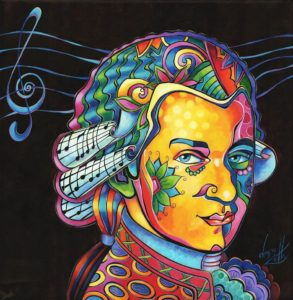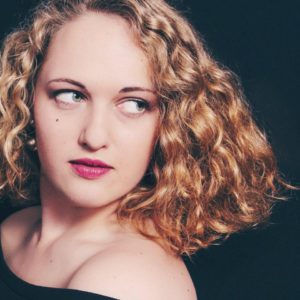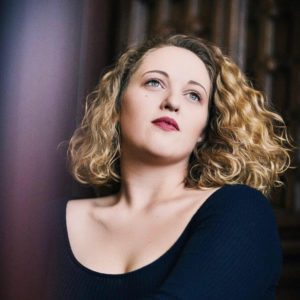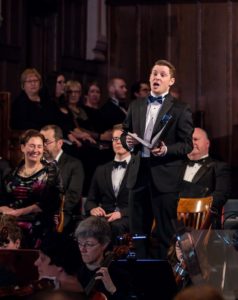Even by nineteenth-century standards, the historic concert on December 22, 1808, was something of an endurance test. That night, Beethoven conducted the premieres of both his Fifth and Pastoral symphonies, played his Fourth Piano Concerto (conducting from the keyboard); and rounded out the program with the Gloria and the Sanctus from the Mass in C; the concert aria Ah! perfido; improvisations at the keyboard, and the Choral Fantasy, written in great haste at the last moment as a grand finale.
If concertgoers that evening read their printed program — the luxury of program notes still many decades in the future— they would have found the following brief guide to the Sixth Symphony, in Beethoven’s own words:
Pastoral Symphony, more an expression of feeling than painting. 1st piece: pleasant feelings which awaken in men on arriving in the countryside. 2nd piece: scene by the brook. 3rd piece: merry gathering of country people, interrupted by 4th piece: thunder and storm, into which breaks 5th piece: salutary feelings combined with thanks to the Deity.
Although Beethoven wasn’t by nature a man of words (spelling and punctuation led a perilous existence in his hands), he normally said what he meant. We must then take him at his word, believing that he had good reason (for the only time in his career) to preface his music with a few well-chosen words and that curious disclaimer “more an expression of feeling than painting.” Perhaps Beethoven was anticipating the controversy to follow, for in 1808, symphonies weren’t supposed to depict postcard scenes or bad weather.
Beethoven’s idea itself was neither novel nor his own. In 1784 (Beethoven was only fourteen), an obscure composer named Justin Heinrich Knecht advertised his newest symphonic creation: Le portrait musical de la nature (A musical portrait of nature) in five movements, including a depiction of the peaceful countryside, the approach of a storm, and a general thanksgiving to the creator once the clouds had passed. It would take hearing no more than a measure or two of music to explain why Knecht has remained obscure while Beethoven turned the music world upside down. The descriptive writing and pastoral subject matter of Beethoven’s symphony are a throwback to the baroque era—think of Vivaldi’s Four Seasons or the Pastoral Symphony in the Messiah—or at least to Haydn’s two oratorios, The Creation and The Seasons, the latter written only half a dozen years earlier.
History books are right, of course, to point out the work’s novelties: the “extra” movement, the descriptive titles, the programmatic element, and pictorial details like the bird calls in the slow movement and the village band in the scherzo. But Beethoven was also right in trusting that “he who has ever had a notion of country life can imagine without too many descriptive words what the composer has intended.”
Our familiar picture of Beethoven, cross and deaf, slumped in total absorption over his sketches, doesn’t easily allow for Beethoven the nature-lover. But he liked nothing more than a walk in the woods, where he could wander undisturbed, stopping from time to time to scribble a new idea on the folded sheets of music paper he always carried in his pocket. “No one,” he wrote to Therese Malfati two years after the premiere of the Pastoral Symphony, “can love the country as much as I do. For surely woods, trees, and rocks produce the echo which man desires to hear.”
They’re all here in his Sixth Symphony. The most surprising thing about the opening Allegro is how quiet it is: seldom in five hundred measures of music (well over ten minutes) does Beethoven raise his voice. Surely no composer—including the so-called minimalists—has so clearly understood the impact of repeating a simple idea unaltered, or slowing the rate of harmonic change to a standstill. When, near the beginning of the development section, Beethoven changes the harmony only once in the course of fifty measures, the effect of that shift from B-flat to D is breathtaking. Perhaps the most remarkable aspect of this spacious, relaxed, blissfully untroubled movement is that it comes from the same pen that gave us— at the same time, no less—that firecracker of a symphony, his Fifth, in C minor.
Not even Donald Tovey, with his precise use of language, could find a better word to describe Beethoven’s slow movement than “lazy.” We can be sure that the laziness is intentional, and it’s amazing how much this least restful of composers seems to enjoy the drowsy pace, the endless dawdling over details, the self-indulgent repetitions of favorite sections, and the unchecked meandering through the byways of sonata form. Beethoven begins with a gentle babbling brook (one of those undulating accompaniment figures that Schubert would later do to perfection) and ends with notorious bird calls. The only problem with the birds is that Beethoven calls so much attention to them, bringing the music—and the brook—to a halt, and then specifying first the nightingale (flute), then the quail (oboe), and finally the cuckoo (clarinet). But as many a writer has pointed out, the birds are no more out of place here than a cadenza in a concerto—the nightingale even provides the final obligatory trill.
The third movement is dance music, with a plain, homely, rustic peasant dance for a midsection trio. But the fun is cut short by dark clouds and the prospect of rain. There’s probably no more impressive storm in all music—the whole orchestra surges and shakes, trombones appear (for the first time) to emphasize the downpour, and the timpani shows up just to add the thunder. This is, of course, no extra “movement” at all, but merely a lengthy, rapid introduction to the finale. The clouds finally roll away, the oboe promises better things to come in a wonderfully heartfelt phrase, and the flute, with its staccato scale, raises the curtain on Elysium. And so, to the yodeling of the clarinet and horn, we willingly believe F major to be the most beautiful key on earth. The moment is parallel to the great triumphant sunburst that marks the arrival of the finale of Beethoven’s Fifth Symphony, and, although the means could hardly be less similar, the effect is just as wondrous.









 Lisa is the founder and director of
Lisa is the founder and director of 

 As a composer
As a composer

